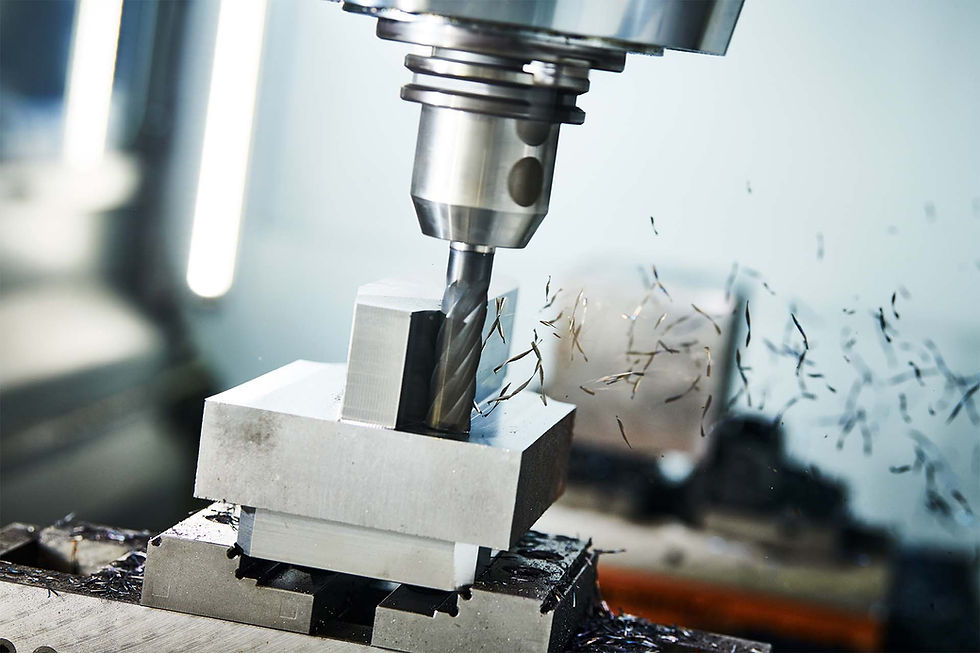Understanding the Different Types of CNC Controllers
- Calvin Wu
- May 2, 2023
- 3 min read

Outline:
Introduction
Importance of CNC controllers in machining operations
Overview of different types of CNC controllers
Types of CNC Controllers
G-code and M-code controllers
Microcontroller-based CNC controllers
PC-based CNC controllers
Proprietary CNC controllers
Open-source CNC controllers
Key Features of CNC Controllers
Programming language compatibility
Axes control
Communication interfaces
Input/output capabilities
User interface and ease of use
Factors to Consider When Choosing a CNC Controller
CNC machine compatibility
Production requirements
Budget constraints
Support and community resources
Conclusion
The importance of selecting the right CNC controller
The impact of the controller on the overall CNC machining process
Introduction
CNC controllers play a crucial role in the operation and performance of CNC machines. They interpret and execute the programmed instructions that guide the machine's movements and actions. This article will provide an overview of the different types of CNC controllers, their features, and how to select the right one for your CNC machining needs.
Types of CNC Controllers
There are several types of CNC controllers available, each with its unique characteristics and advantages:
G-code and M-code controllers: These controllers use G-code and M-code programming languages to control CNC machines. G-code commands dictate movement and positioning, while M-code commands manage auxiliary functions like spindle control and tool changes.
Microcontroller-based CNC controllers: These controllers use embedded microcontrollers to interpret and execute CNC programs. They are typically compact and cost-effective, making them suitable for smaller machines and hobbyist applications.
PC-based CNC controllers: These controllers leverage the processing power and versatility of personal computers to manage CNC operations. They offer advanced capabilities and are suitable for a wide range of applications, from hobbyist to industrial production.
Proprietary CNC controllers: Some machine manufacturers develop their proprietary controllers specifically designed for their machines. These controllers often have unique features tailored to the machine's capabilities and requirements.
Open-source CNC controllers: Open-source controllers are community-developed solutions that are freely available for use and modification. They offer a high degree of customization and flexibility but may require more technical expertise to implement and maintain.
Key Features of CNC Controllers
When evaluating CNC controllers, consider these key features:
Programming language compatibility: Ensure the controller supports the programming languages you plan to use, such as G-code or M-code.
Axes control: The controller should be capable of managing the number of axes your CNC machine requires.
Communication interfaces: Consider the available communication options, such as USB, Ethernet, or RS-232, for seamless integration with your existing systems.
Input/output capabilities: The controller should offer sufficient input/output options to accommodate your machine's sensors, actuators, and other peripherals.
User interface and ease of use: The controller should have an intuitive user interface and be user-friendly for operators and programmers.
Factors to Consider When Choosing a CNC Controller
When selecting a CNC controller, consider the following factors to ensure you choose the right one for your needs:
CNC machine compatibility: Make sure the controller is compatible with your specific CNC machine, taking into account factors such as the number of axes and the machine's power requirements.
Production requirements: Consider your production volume, complexity, and precision requirements, and choose a controller that can meet these needs.
Budget constraints: Evaluate the cost of the controller, including any additional expenses for peripherals, software, or support services, and ensure it fits within your budget.
Support and community resources: Assess the availability of support and resources for the CNC controller, including online forums, tutorials, and customer service. This is especially important for open-source controllers that may require more technical knowledge to set up and maintain.
Conclusion
Selecting the right CNC controller is essential for the overall efficiency and success of your CNC machining process. By understanding the different types of controllers, their features, and the factors to consider when choosing one, you can make an informed decision that will improve your CNC machining operations and help you achieve your production goals.



Comments